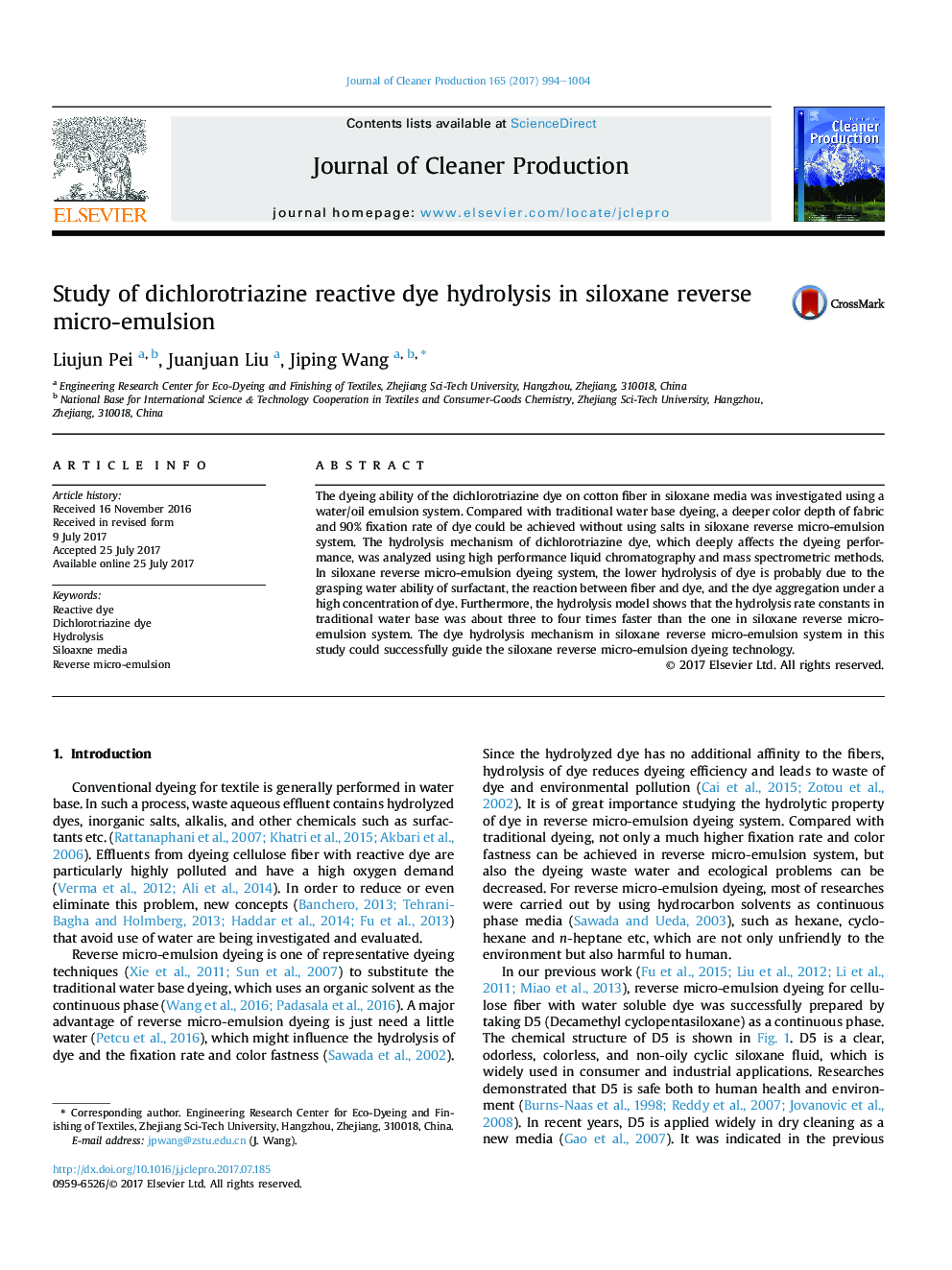| Article ID | Journal | Published Year | Pages | File Type |
|---|---|---|---|---|
| 5480062 | Journal of Cleaner Production | 2017 | 11 Pages |
Abstract
The dyeing ability of the dichlorotriazine dye on cotton fiber in siloxane media was investigated using a water/oil emulsion system. Compared with traditional water base dyeing, a deeper color depth of fabric and 90% fixation rate of dye could be achieved without using salts in siloxane reverse micro-emulsion system. The hydrolysis mechanism of dichlorotriazine dye, which deeply affects the dyeing performance, was analyzed using high performance liquid chromatography and mass spectrometric methods. In siloxane reverse micro-emulsion dyeing system, the lower hydrolysis of dye is probably due to the grasping water ability of surfactant, the reaction between fiber and dye, and the dye aggregation under a high concentration of dye. Furthermore, the hydrolysis model shows that the hydrolysis rate constants in traditional water base was about three to four times faster than the one in siloxane reverse micro-emulsion system. The dye hydrolysis mechanism in siloxane reverse micro-emulsion system in this study could successfully guide the siloxane reverse micro-emulsion dyeing technology.
Keywords
Related Topics
Physical Sciences and Engineering
Energy
Renewable Energy, Sustainability and the Environment
Authors
Liujun Pei, Juanjuan Liu, Jiping Wang,
